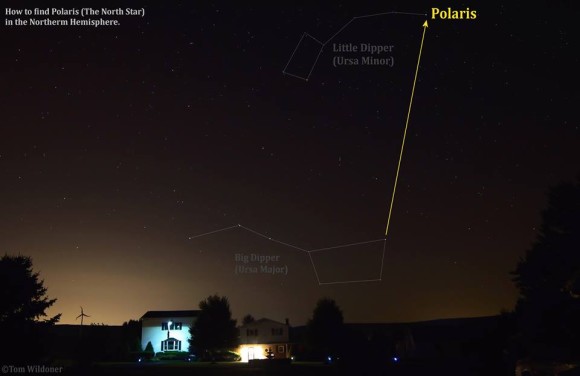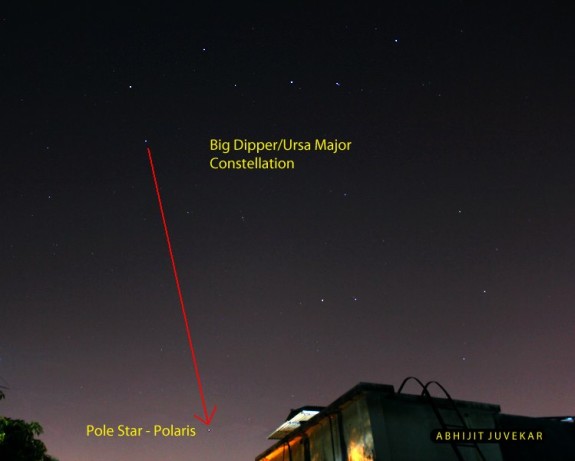![]()
Tonight, if you can find the Big Dipper in the northern sky, you can find the North Star, Polaris. The Big Dipper is low in the northeast sky at nightfall, but it’ll climb upward during the evening hours, to reach its high point for the night in the wee hours after midnight. A well-known trick for finding Polaris, the legendary North Star, is that the two outermost stars in the bowl of the Big Dipper point to it. Those stars are Dubhe and Merak. They are well known among amateur astronomers as The Pointers.
Can’t find the Big Dipper? Yes, you can!
It really does look like a dipper, and it’s pretty bright. You just have to look for it at a time when it’s visible. And that’ll be tonight, and for many nights to come over the coming weeks and months … in the north in mid-evening. Once you find the Big Dipper, use the pointer stars to find Polaris, the North Star.
The Big Dipper isn’t a constellation, by the way. Instead, it’s an asterism, just a recognizable pattern of stars on the sky’s dome. It’s part of the constellation Ursa Major, the Greater Bear.
Enjoying EarthSky so far? Sign up for our free daily newsletter today!

View larger. | Time of year doesn’t matter. If you can see the Big Dipper, you can find Polaris, the North Star. Tom Wildoner of LeisurelyScientist.com shared this shot with us. He captured it around 3:30 a.m. in the month of July. Thanks, Tom!

The two outer stars in the bowl of the Big Dipper always point to Polaris, the North Star. Image by Abhijit Juvekar in India.
Bottom line: Use the Big Dipper to find Polaris, the North Star.
EarthSky lunar calendars are cool! They make great gifts. Order now.
Source:
https://earthsky.org/tonight/use-the-pointers-to-find-polaris